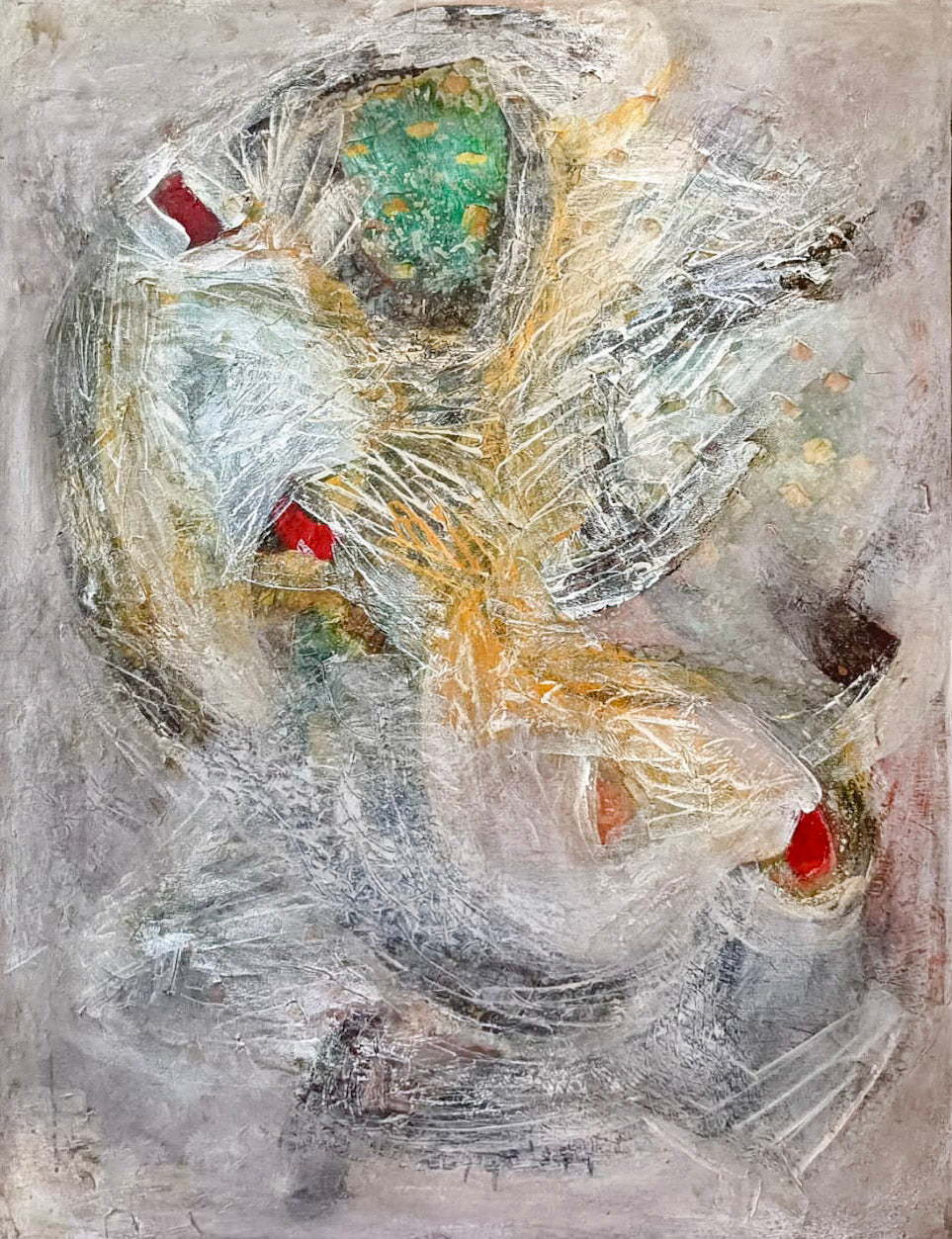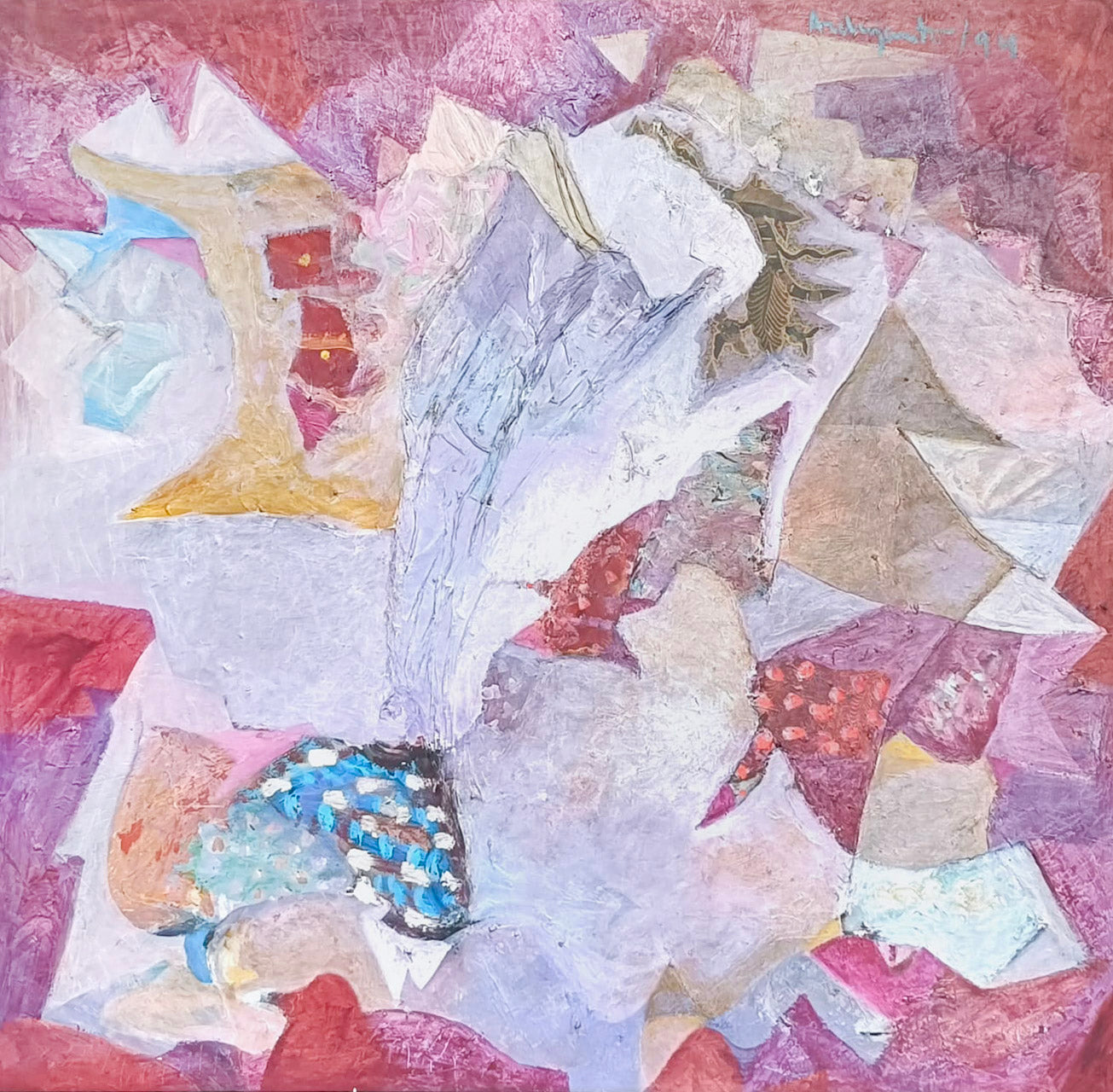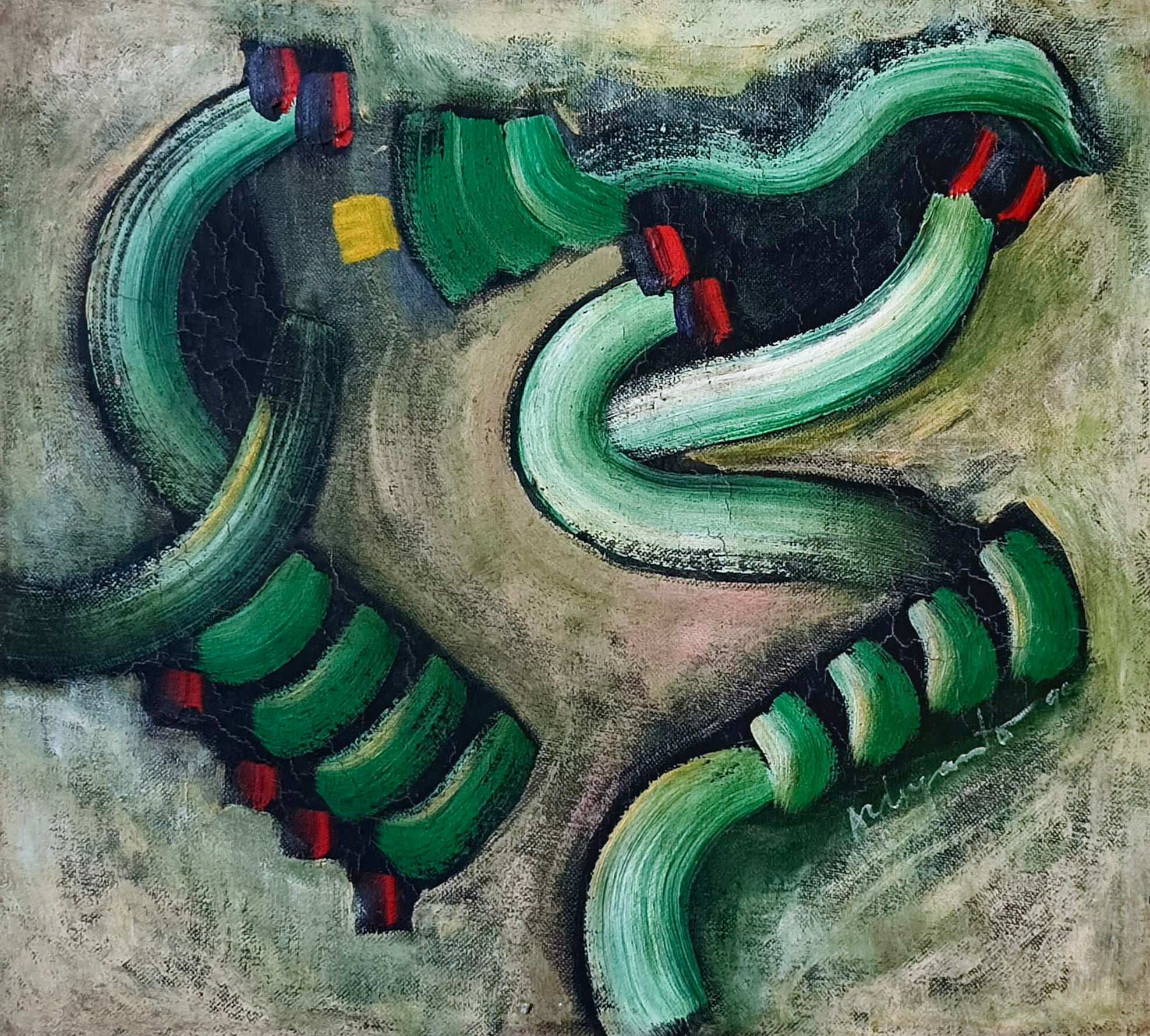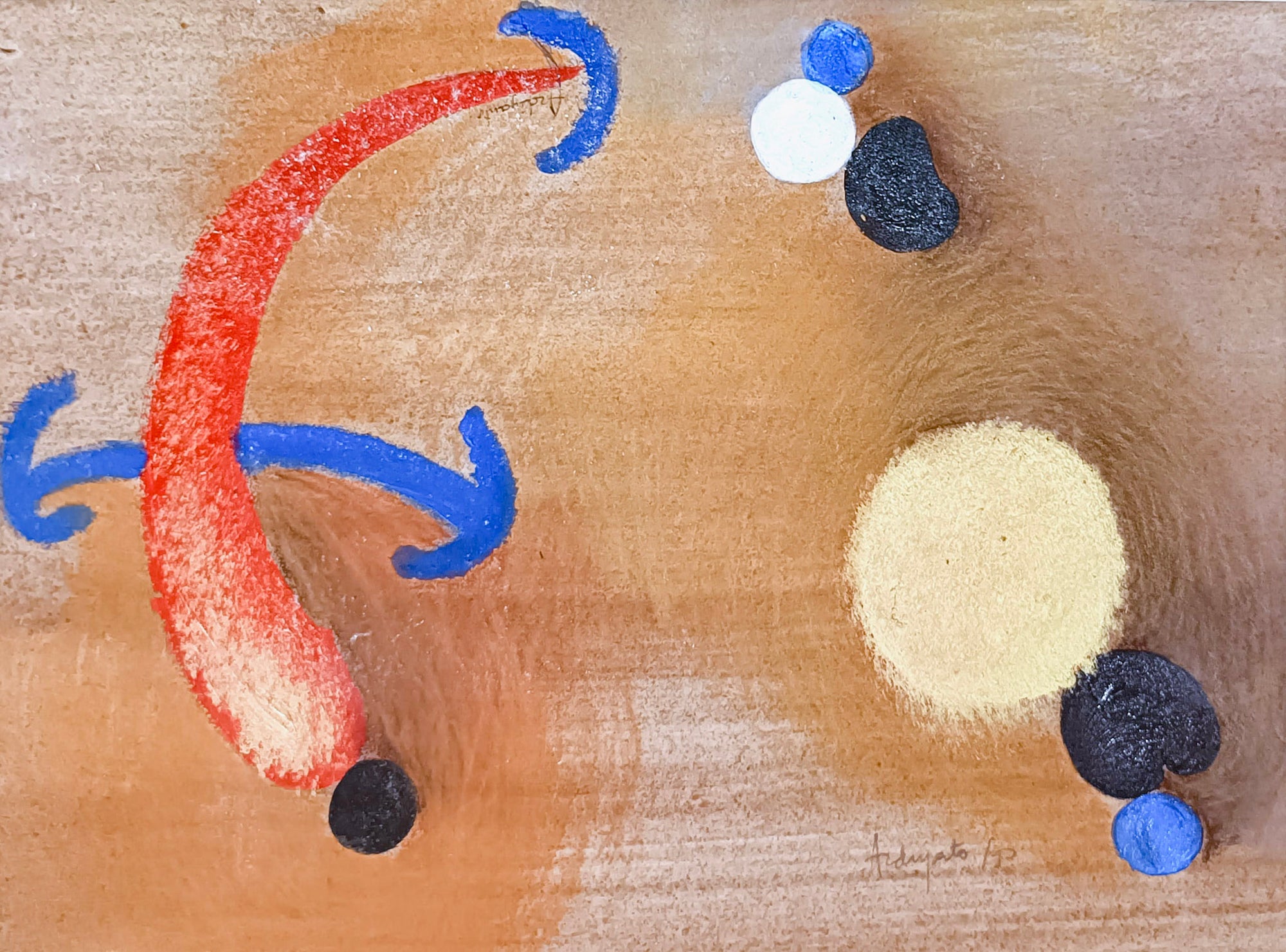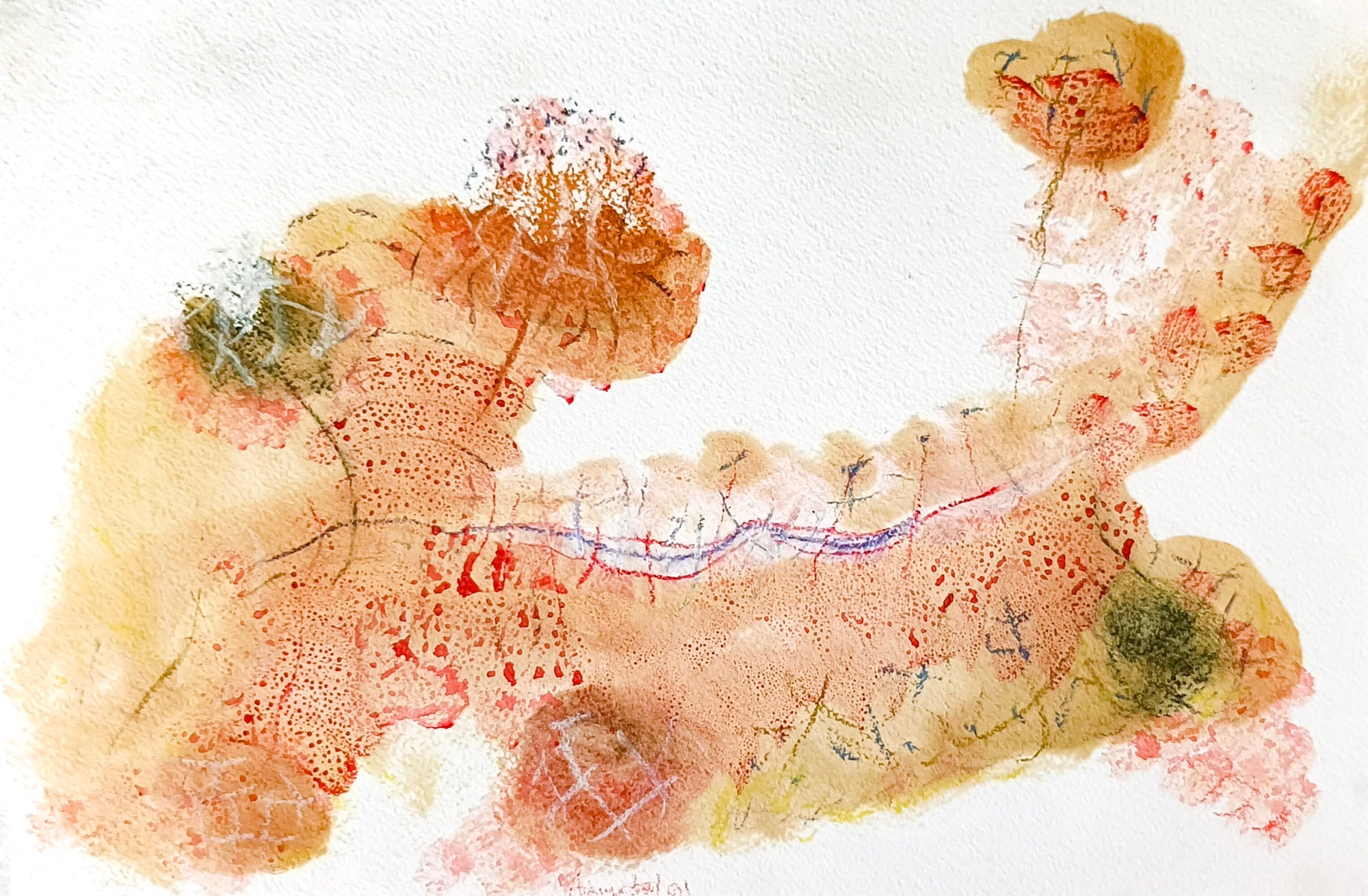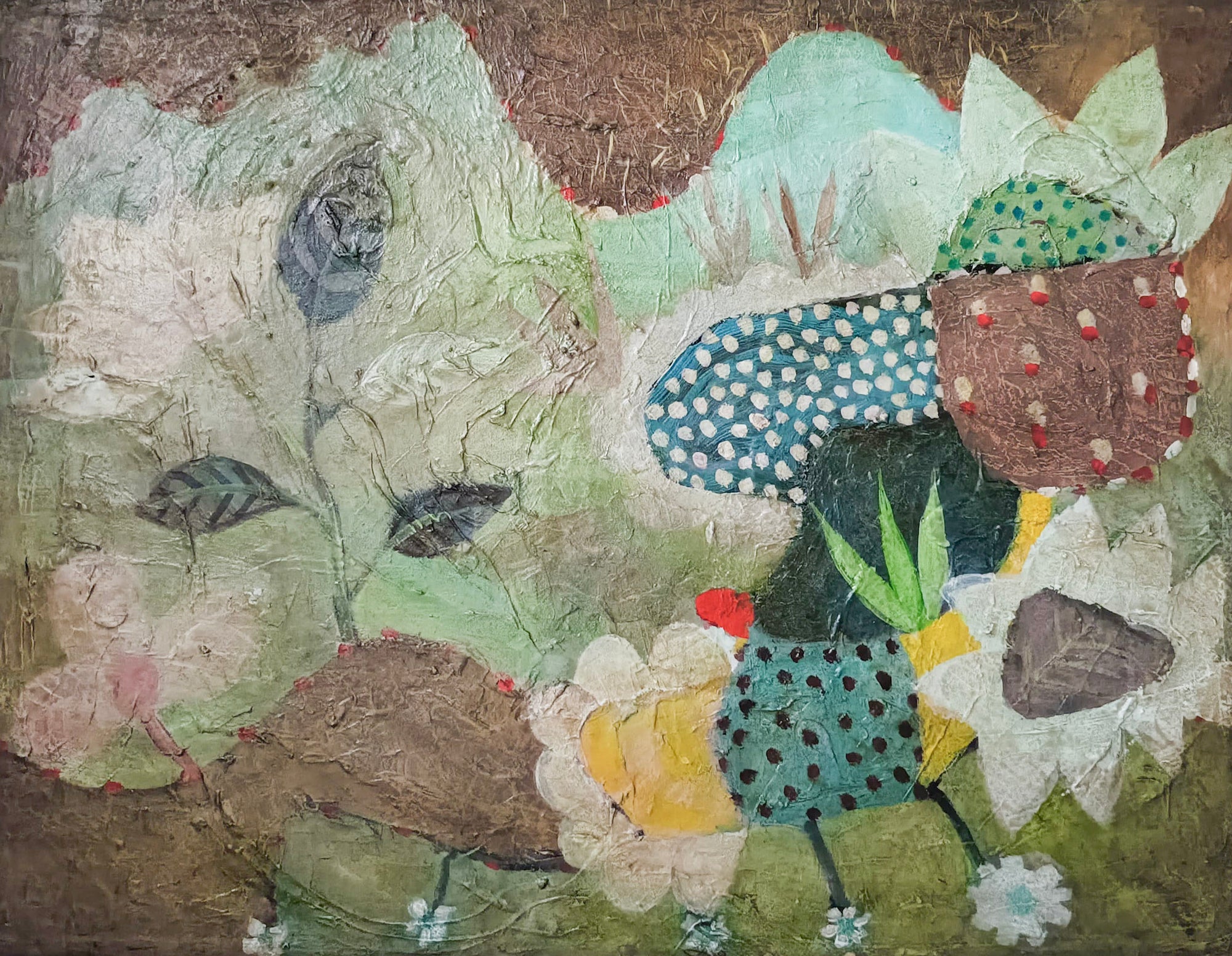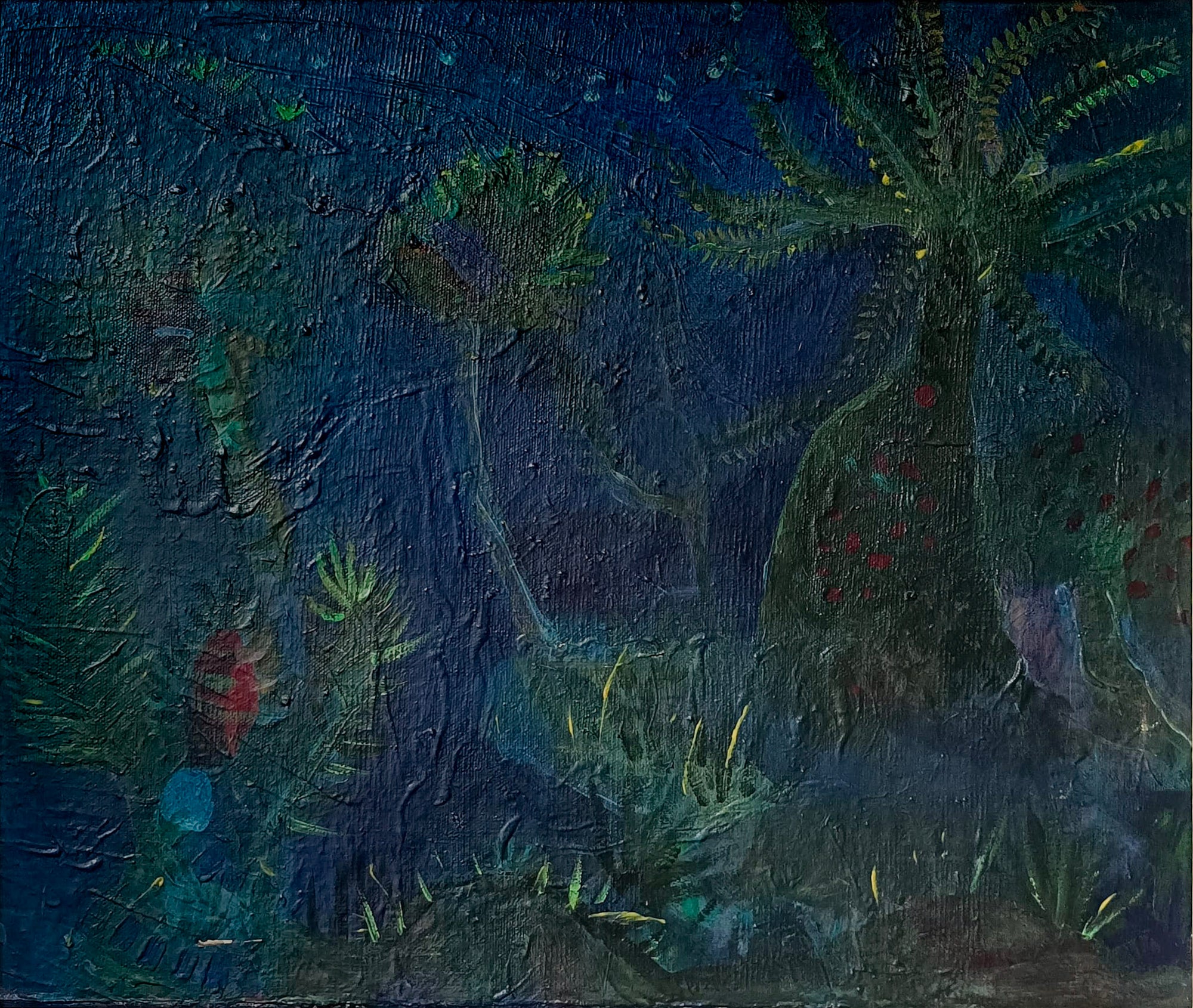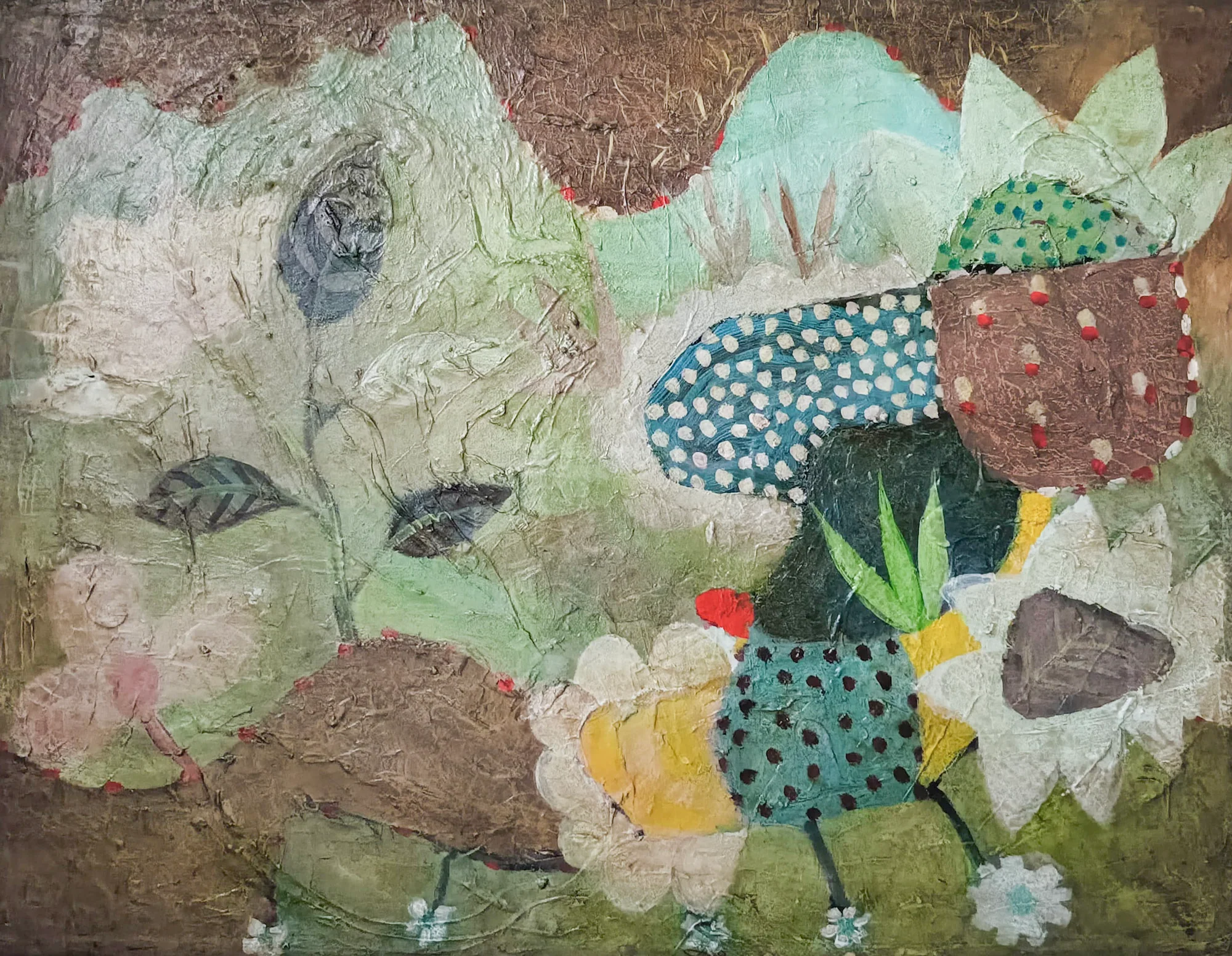
Ardiyanto Pranata
Beyond the Studio: Ardiyanto Pranata's Story of Art, Science, and Community

Yellow and red wall hanging with animal motifs including dragons in batik
The sound of batik wax crackling on fabric has echoed through Javanese workshops for centuries, yet in 1970s Yogyakarta, something entirely new was emerging from one particular studio. Here, a former food technologist named Ardiyanto Pranata was approaching both traditional textile arts and contemporary painting with the methodical curiosity of a scientist and the restless imagination of a modernist.
What unfolded over the following decades defied easy categorisation. Ardiyanto's works were a meditation on colour, form, and the possibilities hidden within both ancient and modern techniques. His home became a gathering place where local artists mingled with international visitors, where conversations about art stretched late into tropical evenings, and where his unwavering support for fellow creators fostered a community that transcended the boundaries between teacher, student, collector, and artist.
Setting the Scene
Tracing his beginnings, Ardiyanto was born in Surabaya on 7 September 1944. With an academic foundation culminating in a Ph.D. in food technology from Gadjah Mada University, he approached textiles with the precision of a scientist. Ardiyanto also spent his years teaching at the definitive Indonesian school of arts, ISI (Indonesia Institute of The Arts Yogyakarta). He held a strong commitment to the solidification, patronage, and expansion of the Arts Scene - attaching a great importance to the cause.
In 1972, he founded PT Ardiyanto Wijayakusuma Batik Yogyakarta, turning his home into a salon-gallery where museum-quality textiles were both made and shown.
This was Yogyakarta’s golden moment: a city already celebrated for its vibrant arts, Ardiyanto’s studio became a hidden nucleus of experimentation. Visiting international patrons would be greeted not just by ritual batik, but by unprecedented interpretations of its possibilities.
Early Experiments and Creative Kernel
Ardiyanto’s education extended beyond chemistry; between 1966-69, he studied Japanese ikebana in Yogyakarta, and later, in 1992, experimented with graphic design in Amsterdam. He then attended workshops for wool batik (1997) and printmaking in Darwin (1997-98). These influences converged in a studio alchemy: materials ranged from wool batik to cotton and silk, and he alternated between traditional resist-dyeing and abstract oil or acrylic canvases.
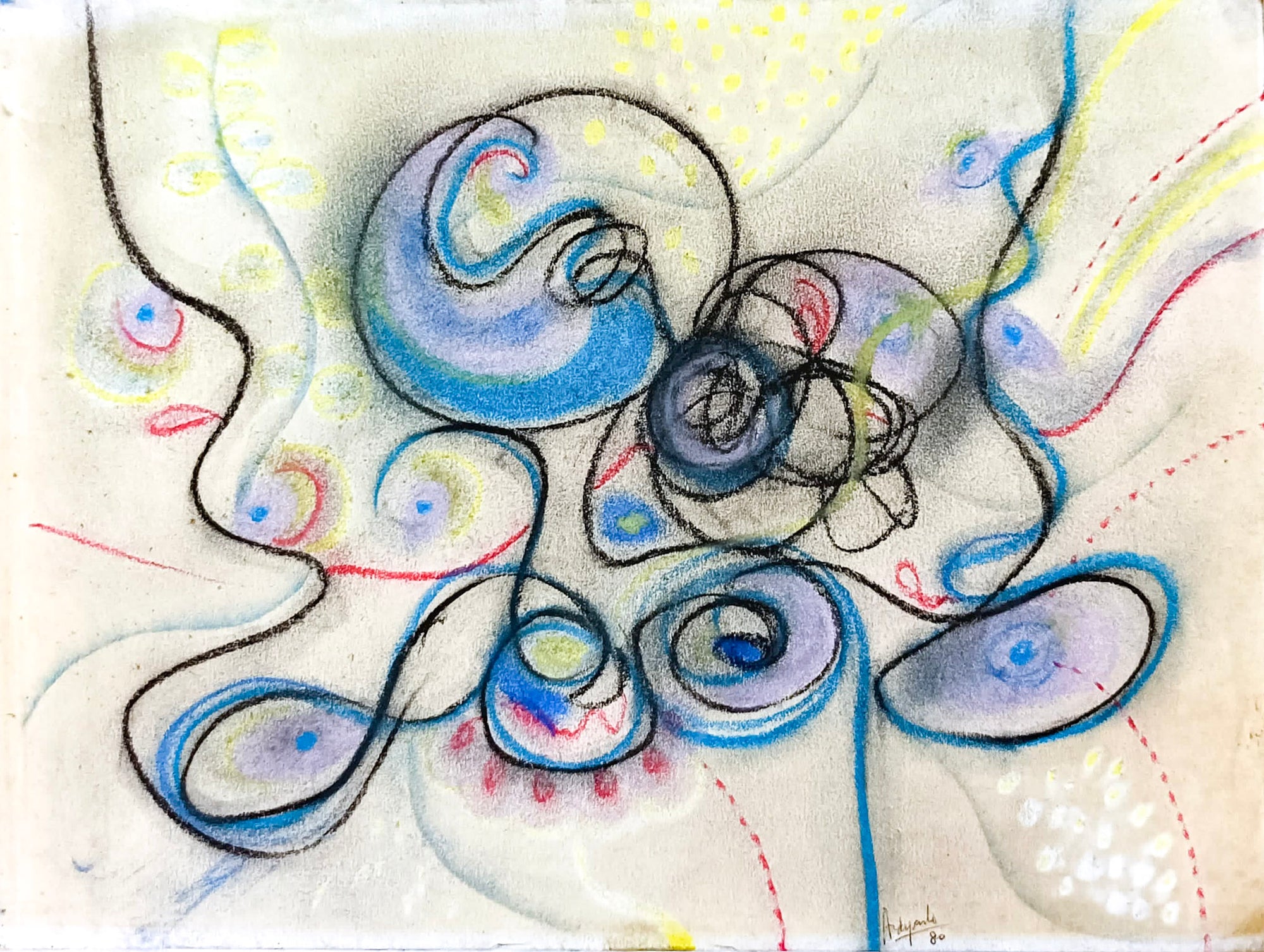
Ardiyanto Pranata, Untitled (Swirls), 1980
Works such as Untitled (Swirls) show this early willingness to treat batik as a field of abstraction, with curling forms seeming to resemble both natural growth and chemical reactions. The work feels like a zoom-in into a larger scene, with lines that seem to extend beyond the limits of the canvas. Already, you can see Ardiyanto’s artistic mind and his revolutionising of the otherwise static Batik style.
Ardiyanto’s batik was engineered to withstand time. Slow-dyed, layer by layer, some pieces taking up to eight months to complete. This procedure resulted in batiks that flouted common outlines and crackle effects, replaced instead with gradients, tonal drama, or even abstract pointillist effects echoing modern painting.
|
|
|
|
In Movement, the layered marks suggest both meditative repetition and kinetic energy, creating a dynamic viewing experience that unfolds over time. Rather than offering a single, immediate impression, the work invites an ongoing process of visual exploration. The viewer's gaze travels back and forth across the composition, tracing from subject to subject, corner to corner, in a rhythm that mirrors the artist's own mark-making process.
Community, Collecting and Influence
Ardiyanto’s legacy cannot be separated from the community he helped cultivate. A long-time lecturer at the Indonesia Institute of the Arts (ISI) in Yogyakarta, he was known not only for his technical mastery, but also for his role as a patient, open-hearted mentor. His background in both science and the arts allowed him to straddle disciplines, making him a valued educator for students seeking to bridge tradition and experimentation. He brought the same rigour to his classroom as he did to his batik studio.
Beyond the institution, Ardiyanto played a visible role in Indonesia’s cultural infrastructure. He was regularly invited to serve as a juror at national batik competitions. In 1997, he co-curated the Bursa Seni (Art Bourse) segment of the Festival Kesenian Yogyakarta (Yogyakarta Arts Festival) [1], an ambitious initiative to encourage the buying and selling of contemporary Indonesian art at a time when such markets were still developing.
That same year, he was appointed as a consultant for art tourism and cultural collaboration programmes that brought Indonesian visual art to wider audiences through ASEAN-linked events and cross-border partnerships. His involvement in these roles underscores how trusted and respected his curatorial eye had become.
His personal studio, PT Ardiyanto Wijayakusuma Batik, was more than a workshop. Artists, academics and collectors from Indonesia and abroad regularly visited, and it became a venue not only for making and exhibiting, but also for critique and conversation. Importantly, Ardiyanto didn’t position himself as a centre of the universe within these exchanges. Instead, he sought input, asked questions, and quietly supported others.
A Letter from Haji Widayat

The above is a letter from Haji Widayat. Widayat was a pioneering Indonesian painter and one of the founding figures of modern Indonesian art, particularly known for his role in establishing the Yogyakarta art scene in the post-independence era. His correspondence with Ardiyanto Pranata reflects the deep respect and mentorship relationships that characterised Indonesia's tight-knit artistic community. It writes,
Ardiyanto adalah seorang artis yang sangat produktif. Walaupun di indonesia namanya belum begitu dikenal, namun karya2nya sering dipamerkan di luar negeri.
Di kalangan seniman yogya ia sangat populer. Ia senang bergaul. Ia tak segan2 minta pendapat teman2 sesama pelukis. Ia sangat menghargai karya seniman2 lain.
Apabila karyanya lujual, maka hasil penjualan karya itu dipergunakannya untuk mengkoleksi karya teman2nya.
Inilah uniknya seorang Ardiyanto. Dari lukisan untuk lukisan.
Selamat pameran dan sukses.
h. Widayat
9-12-1990
Widayat begins by recognising Ardiyanto as a remarkably productive artist, one whose works have consistently been shown abroad, even though his name remained relatively unfamiliar within Indonesia at the time.
Yet within the Yogyakarta art community, Widayat notes, Ardiyanto was widely loved. He was the kind of artist who genuinely engaged with others, actively asking fellow painters for their thoughts, showing an open and curious spirit. He was not insular or ego-driven; instead, he valued the creative output of his peers and treated his role within the community seriously.
One of the most touching lines in the letter reflects on what Ardiyanto did with the proceeds of his own sales. Rather than spending it on personal luxury or expanding his fame, he used that money to collect the work of his friends. There’s something quite radical in that. Ardiyanto built a collection not as a trophy case, but as a living archive of his peers’ creativity. He supported his community not just in words, but materially, redistributing the success of his own practice to keep the ecosystem around him thriving.
“Inilah uniknya seorang Ardiyanto,” Widayat writes. This is what makes Ardiyanto unique. And he concludes with a beautifully poetic line: “Dari lukisan untuk lukisan.” From painting, to painting.
That phrase captures Ardiyanto’s entire ethos. His practice, his humility, his love for art as something greater than himself. It showcases a worldview that values art not as an end product, but as a means of connection, reciprocity, and enduring commitment to a creative life shared with others.
Ardiyanto’s Art
Examining Ardiyanto's works reveals an artist with thorough command of his mediums. He was drawn to abstraction, creating works that often diverged from their titles—not from inability to render realistically, but from deliberate rejection of formal constraints.
Whilst Yogyakarta artists famously explored social realism [2], Ardiyanto moved against this current. His abstraction, vivid colours, what appears to be a lack of linework demonstrates how Ardiyanto saw art divergently from his peers.
His subjects reveal a deep fascination with cellular and biological forms, rooted in his scientific education. You can see this intrigue clearly in his 1990 work ‘Ripples’, which looks more like a diagram than a work of art, with its arrows and imperfect circles.
|
|
|
His 1991 work Puppy, on the other hand, explores his fascination with biology. The figure is imprinted in red, the same way the internal system of an organism is usually depicted, with the spine depicted through red and blue lines reminiscent of nervous system diagrams.
Ardiyanto was equally drawn to natural phenomena. 'Waves' captures his intrigue with fluid movement, particles flowing and shifting. A red streak through the centre represents current, transforming static observation into kinetic energy. The contrast between cool blues and warm red creates compelling visual tension.
His 1991 work 'Valley' traces paths with the fluidity that became his signature. Simple in concept but evocative in execution, 'Valley' becomes hypnotic—leaving viewers wondering what lies between the spots of brown, what the valley truly contains.
Architecture in Living Memory
A significant part of Ardiyanto's legacy lies in the aforementioned salons he hosted during the 1970s and 80s. His home became a cultural hub dedicated to arts patronage, where he welcomed international socialites and helped establish Yogyakarta's reputation in the global art world.

The exterior of Ardiyanto's home. Image courtesy of Laras Magazine.
Ardiyanto's home was a living extension of his artistic vision. The joglo-style pavilion, set within a tropical garden of heliconia and plumeria, transformed his dwelling into a lived-in gallery where tradition and innovation coexisted harmoniously.
Inside, guest books rested on an antique chest adorned with his own dark green batik work, while Burmese ceramics and a red Paku Buwono X-era chair sat alongside European furniture. The corridors featured bamboo sofas and batik upholstery he had crafted himself, creating spaces that welcomed both contemplation and conversation.
His family room, which he fondly called the audio room, carried a lighter, more intimate atmosphere. Paintings by colleagues and friends lined the walls alongside his own works, while pastel batik curtains—sewn by his own hands—softened the natural light. This was a space that reflected his generous spirit and his belief in bringing diverse artistic voices together.
 |

|
 |
The interior of Ardiyanto's Home. Images courtesy of Laras Magazine.
His home stood as a testament to his artistic philosophy: that beauty emerges when tradition and modernity, formality and intimacy, individual vision and community spirit find their place together.
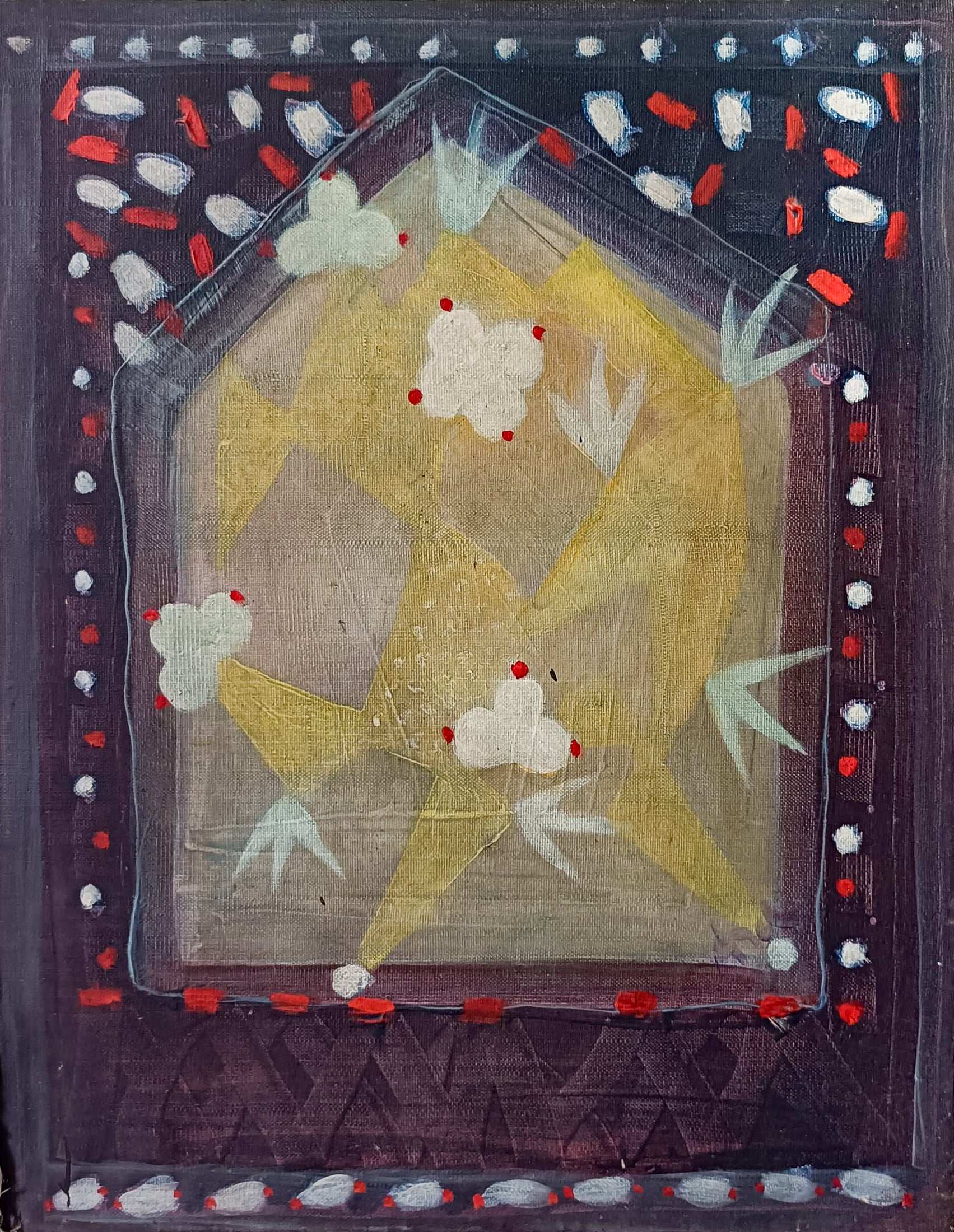
Ardiyanto Pranata, Window with Flower, 1996
In his 1996 work 'Window with Flower', we glimpse Ardiyanto's vision for domestic space as artistic experience. The painting's frame functions as a stage that transforms the mundane into the meaningful — a philosophy he embodied in his own home, where familiar objects were recontextualised into ongoing visual dialogues.
His Garden in His Art
|
|
|
Ardiyanto himself was quite fond of the landscaping of his home, capturing many of these scenes in his art, immortalising this work of design. In his 2005 work, My Garden II, Pranata depicts, the rocks, flowers and what seems to be mushrooms in the daylight. Although the colour palette is reflective of reality, Ardiyanto’s divergence from realism can be found in the perspective of his ‘Garden’ - everything is larger, and the view feels like that of an insect’s.
A darker work, 'My Garden In The Night' presents a nocturnal scene. His plants, rendered in their most elemental forms, evoke something prehistoric and profoundly quiet. The absence of human figures amplifies this sense of primordial solitude.
Remembering Ardiyanto Pranata

Image of Ardiyanto with visitors at his home. Image courtesy of Laras Magazine.
Ardiyanto Pranata passed away on October 19, 2022 at the age of 78 years. To those in his orbit, he was a giver: of knowledge, of conversation, of deep respect for both tradition and artistic risk. His artworks remain in collections in Indonesia, Europe and Australia. His batiks are preserved in museums, and his legacy lives on in the many artists, students and friends who continue to share his values.
In remembering Ardiyanto, we remember an artist who practised with integrity, who used his success to lift others, and who saw art not as a marketplace, but as a shared commitment to beauty, precision, and care. His was a life lived through art—for art, and for others.
At Art Again, we champion this kind of artistry and art that has endured as much as the artist himself. Ardiyanto's prolific output reflects his commitment to the art scene and his deep love of creation: works that deserve to live on in homes worldwide, to be welcomed just as Ardiyanto welcomed so many into his own home.
Written by Brenda Chak
& Fithriah Hashim
---
If you are interested in the works of Ardiyanto Pranata, our marketplace offers several. See the listings below, and the works featured in the article above to explore his works listed on our site. There are more works available, for serious inquiries please email us at sales@artagain.co.
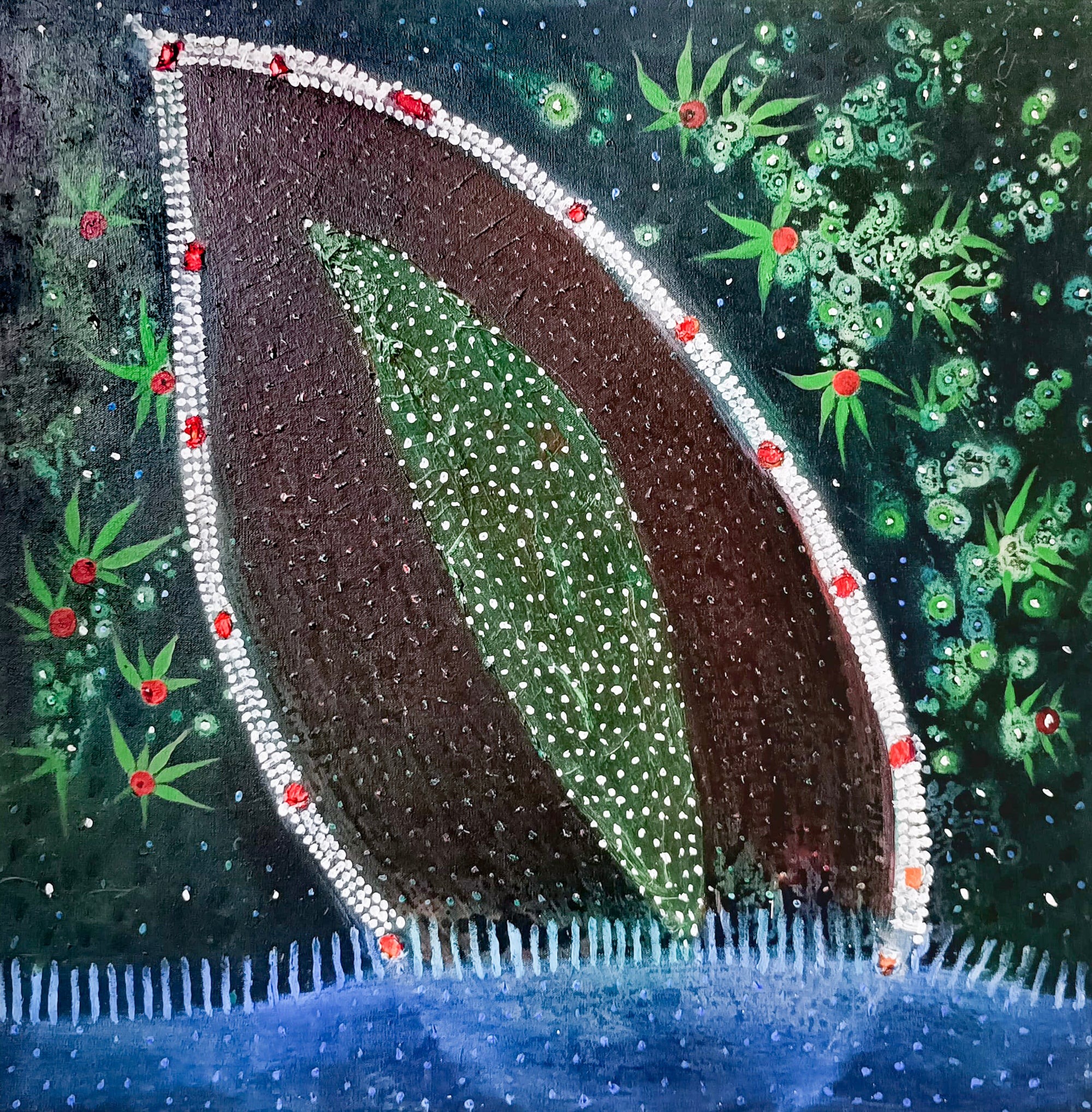
Ardiyanto Pranata, Flower, 2005
Acrylic on canvas
70 x 70 cm
View listing.
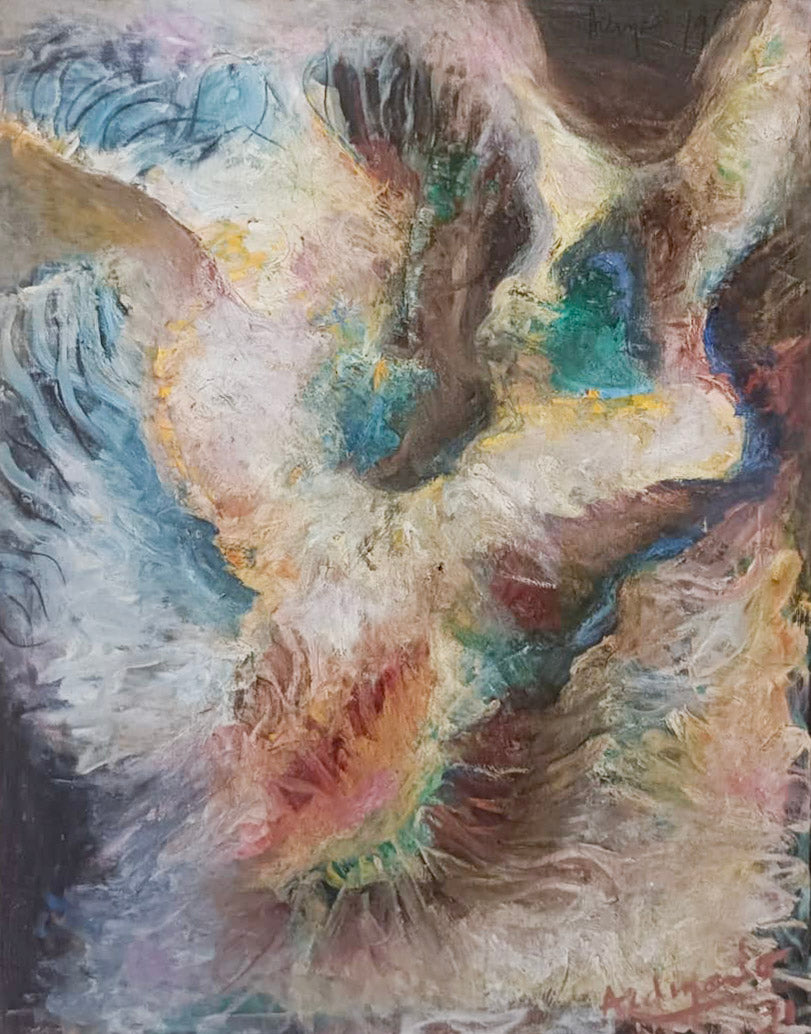
Ardiyanto Pranata, Untitled (Valley), 1991
Acrylic on Canvas
95 x 75 cm
View listing.
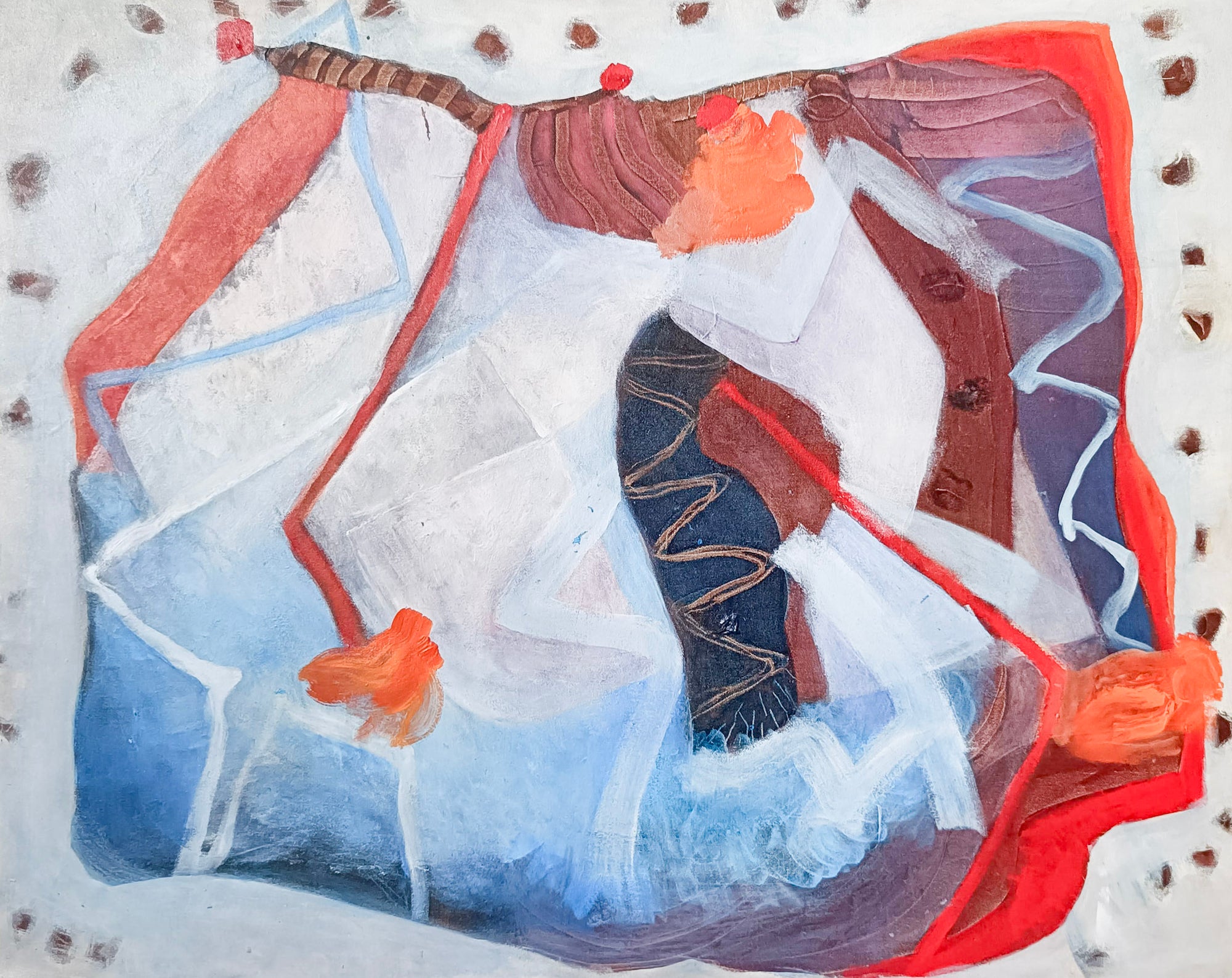
Ardiyanto Pranata, Nyanyian Merah Putih Ditengah, 2006
Acrylic on Canvas
80 x 108 cm
View listing.
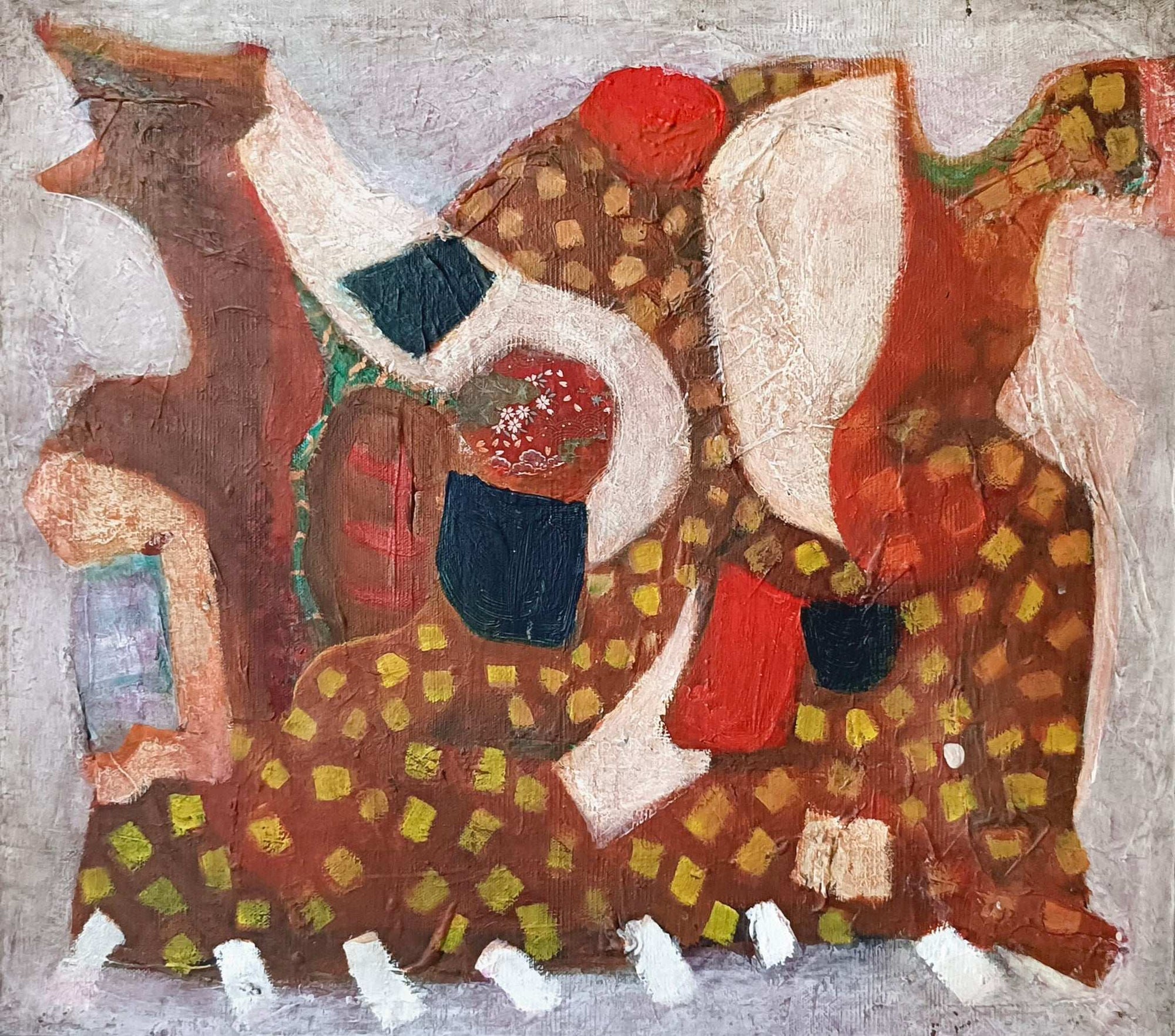
Ardiyanto Pranata, Untitled (Subtle Flower), 2004
Mixed media on canvas
60 x 80 cm (visible)
View listing.
Footnotes:
[1] Art Bourse Yogyakarta was Indonesia's pioneering art market platform, established in the 1990s as one of Southeast Asia's first organized secondary art markets. Based in Yogyakarta—Indonesia's cultural capital—the Art Bourse operated as both a physical marketplace and cultural institution, facilitating the buying and selling of Indonesian artworks while fostering dialogue between collectors, artists, and art enthusiasts. The platform played a crucial role in legitimizing and professionalizing Indonesia's art market during a period of significant cultural and economic development, helping to establish pricing standards and market practices that influenced the broader Southeast Asian art scene.
[2] Haji Widayat (1919–2002) was a prolific and influential Javanese artist born in Kutoarjo, Central Java, regarded as one of the most influential Javanese painters of the 20th century. He became known as "Bapak Lukisan Dekoratif" (Father of Decorative Painting). His "dekora-magis" (magical-decorative) style featured enchanted, fantastical worlds inspired by Javanese legends, creation narratives, and folklore. His works fused traditional values with contemporary aesthetics through intricate detail and harmonious color
[3] Indonesia's art scene has famously been divided into the bandung school and yogyakarta schools of art. Though they literally represent the two different physical schools of art famous within Indonesia, the concept reveals a difference between the two schools of art. Bandung's artists have hsitorically been more inclined to western styles and forms as opposed to Yogyakarta's artists, who are more inclined towards Social Realism as both concept and stroke-style. More on the two schools here.
[4] All information on Ardiyanto’s home has been derived from Laras Magazine, Magazine of Interior and Architecture (PT. Laras Indra Semesta, August 1992)
|
If you enjoyed this blogpost, consider buying me a coffee. Please scan the QR code here >>
What is "buy me a coffee"? Buy Me a Coffee is a way for people to tip or say thank you to content creators and creatives.
Also you didn't ask but here're our preferred coffee orders:
|
 |
